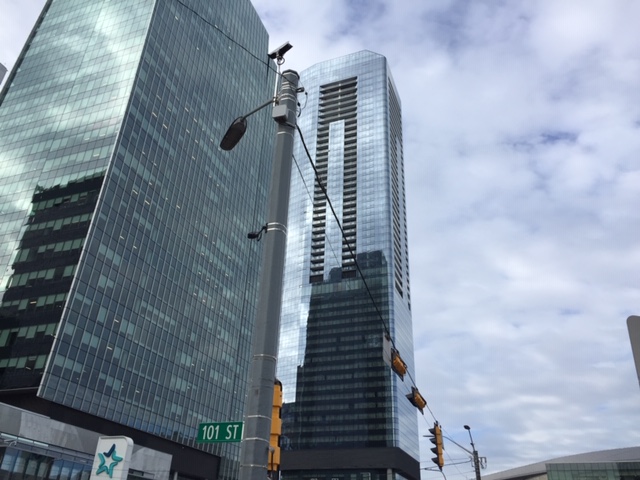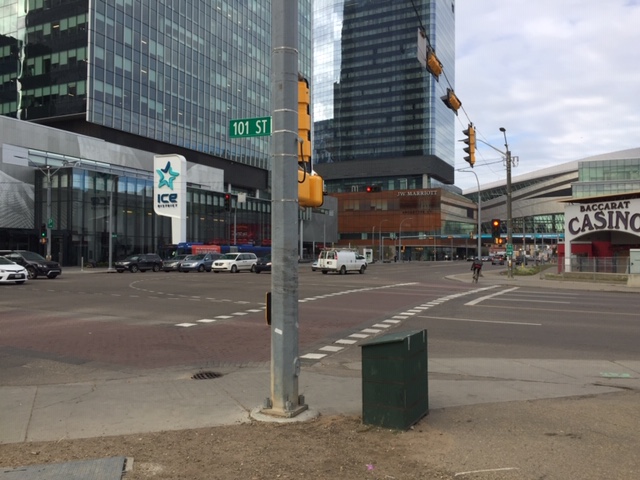Don’t you just hate it? Late at night when you’re stopped at a red light and coming the other direction is… absolutely nothing?

Edmonton traffic engineers have installed a new adaptive traffic signal system as a three-month test. It’s to synchronize a seven-block stretch, north from downtown along 101 Street to 111 Avenue.
“These are meant to actually read how things are going on fly,” said Councillor Andrew Knack, who’s been pushing for this pilot project for a few years.
“Since it’s on a corridor, it’s telling the upcoming lights how many cars are passing through, what we need to be aware of.
“It’s not just responding to vehicle traffic; it’s able to respond to people wanting to walk across the street to make sure they have enough time.”
As part of the pilot, an automatic pedestrian direction system has been installed at the intersection of 103A Avenue and 101 Street. It is designed to initiate the walk signal when pedestrians are at the crossing points.
Having it within a slapshot of Rogers Place is on purpose.

Get breaking National news
“Having it right by the arena makes a lot of sense because you have a lot of vehicle traffic but you have a lot of pedestrian traffic too, particularly on event nights. That’s part of this.
“You want to understand: how is it working at rush hour? How is it working when there are big events later in the evening when there is more foot traffic than vehicle traffic? How can that respond to each of those items?”
The installation is the first in Canada, although Knack said the reviews he’s read from the U.S. are impressive.
“What we’ve seen from Pittsburgh — they’ve seen anywhere from a 20 to 25 per cent reduction in vehicle travel time along certain corridors. If we can get even half of that, that’s an incredible leap.”
“If you see a 20 per cent reduction in vehicle travel time, maybe you have to go and say, ‘Wow, let’s get it on these corridors right away,’ so people can start enjoying the benefits of that.
“It’s very hard to often say you can reduce congestion, but maybe this is one tool that will allow us, at least in the short term, to have more of an impact like that.”
Knack likened the potential for improvement to a decade ago when street lights were replaced well before their expiry date with LEDs because of the cost savings.
“Maybe doing some targeted improvements on specific corridors — these are all things that could happen once we finish this work on this particular corridor.”
The city said it’s too early to tell whether this technology could be used with at-grade LRT crossings, where traffic has historically snarled.
“I think it would take some time to fully understand and develop an understanding of how a system like this could work. Again, this is a very new system,” said director of traffic operations Olga Messinis.
Councillor Andrew Knack said the lights could be rolled out across the city, including at LRT intersections.
“To me, there’s really no limit to where we want to put this, assuming it works the way we think it will,” he said.
Data will be collected through the end of December and Knack said a report will come back with results early in March for council to look at.
–with files from Julia Wong












Comments